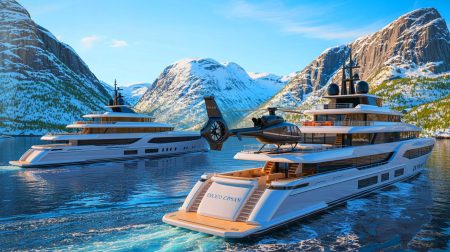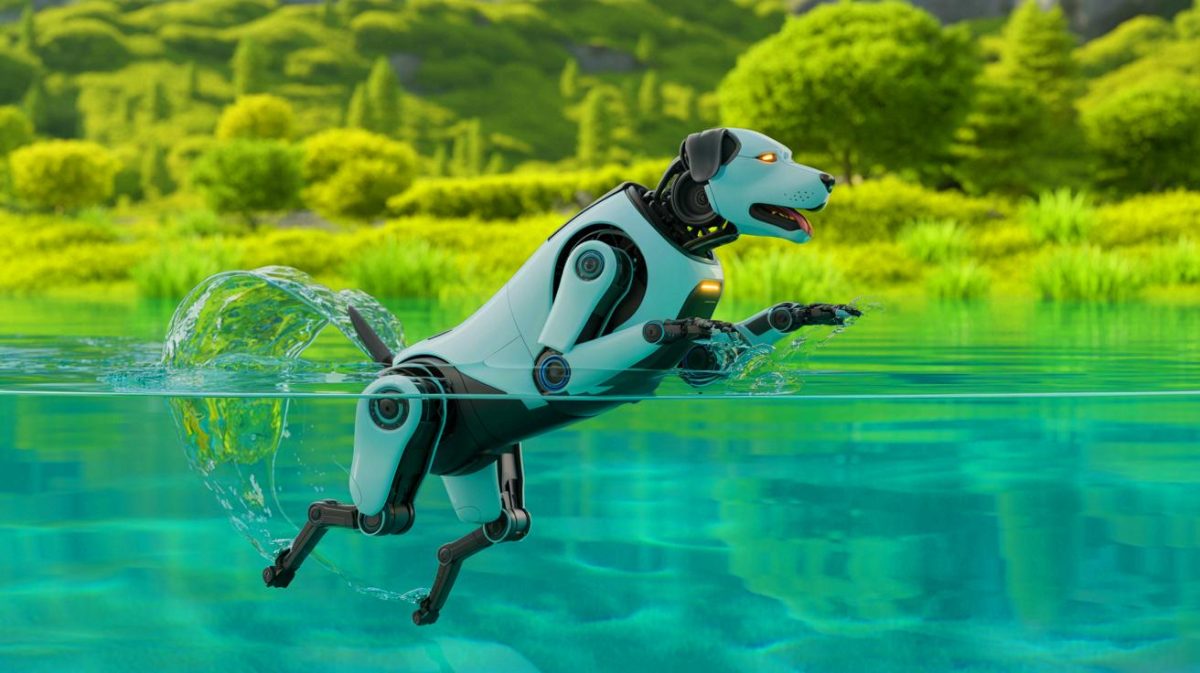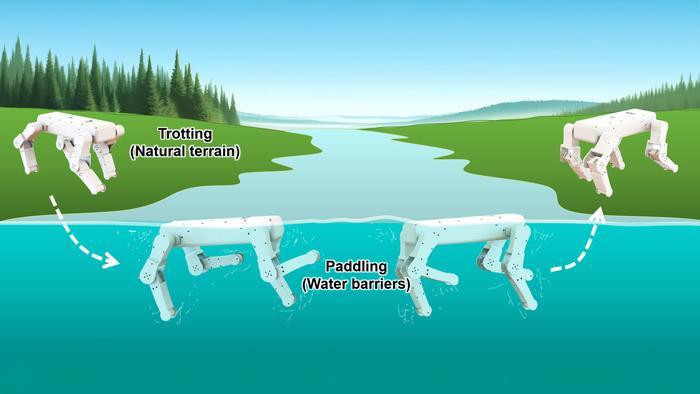| IN A NUTSHELL |
|
In the ever-evolving world of robotics, a remarkable innovation has emerged: the Amphibious Robotic Dog. This groundbreaking machine, inspired by the natural movement of dogs, is designed to conquer both land and water. Unlike many amphibious robots that take cues from insects or reptiles, this new creation draws from the effortless grace with which dogs traverse different terrains. With its bio-inspired design, the robot boasts unprecedented agility, dynamic movement, and impressive load capacity. This leap forward in technology promises applications in diverse fields such as environmental research, military vehicles, and rescue missions.
Robot Dog’s Paddling Mechanisms
The majority of existing amphibious robots have drawn inspiration from reptiles and insects, often compromising on agility and payload capacity. However, the Amphibious Robotic Dog mimics the swimming techniques of mammals, particularly dogs, to enhance its movement between land and water. By modeling its paddling mechanisms after a dog’s natural swimming motion, the robot achieves a smoother transition and superior performance compared to its insect-inspired counterparts. The structure is engineered with a precise balance of weight and buoyancy, ensuring stable and effective aquatic performance. This design not only enhances the robot’s mobility but also sets a new benchmark in bio-inspired robotics.
Aquatic Locomotion
The researchers behind the Amphibious Robotic Dog have meticulously developed and tested three aquatic locomotion strategies. Two of these gaits are inspired by the doggy paddle, a well-known swimming style in canines, which maximizes speed and propulsive force. The third gait, modeled after a trot, prioritizes stability in challenging waters. This trot-like style is particularly beneficial for navigating turbulent environments where maintaining balance is crucial. The robot achieves a top water speed of 0.576 kilometers per hour (0.357 miles per hour) with the doggy paddle approach. On land, it reaches a practical speed of 1.26 kilometers per hour (0.78 miles per hour).
Applications and Future Prospects
The Amphibious Robotic Dog opens up new possibilities in various fields. Its ability to operate efficiently in dual environments makes it ideal for search and rescue missions, as well as environmental research and industrial inspections. The bioinspired trajectory planning and double-joint leg structure enhance its effectiveness, addressing limitations such as slow swimming speeds. In 2024, MAB Robotics introduced the Honey Badger, a quadruped robot that also operates underwater and on land, showcasing the growing interest in dual-environment robots. This trend indicates a future where amphibious robots play a crucial role in tasks that require versatility and adaptability.
Engineering Excellence and Bioinspiration
The success of the Amphibious Robotic Dog lies in its engineering excellence and bioinspired design. The researchers’ approach to replicating the natural paddling gait of real dogs has overcome previous challenges in amphibious robotics. The combination of three different paddling gaits and a double-joint leg structure makes this robot highly effective in water and on land. The study, published in the journal Bioinspiration and Biometrics, highlights the potential for bioinspired robots to revolutionize various industries. As technology continues to advance, the integration of nature’s designs into robotics could unlock new levels of performance and functionality.
As the Amphibious Robotic Dog continues to capture attention with its impressive capabilities, it prompts us to consider the broader implications of bioinspired technology. How might the integration of natural movements into robotics transform other fields, and what new applications could emerge as a result? The journey of this innovative robot raises exciting questions about the future of technology and its potential to mimic the wonders of the natural world.
Did you like it? 4.3/5 (24)








Wow, this robot dog is incredible! Can it fetch a stick too? 😂
Quelqu’un sait si ce robot est déjà disponible pour l’achat?
Merci pour cet article fascinant! Les possibilités sont vraiment excitantes. 😊
La vitesse de ce robot semble un peu lente. Est-ce vraiment pratique pour les missions de secours?
Imaginez un jour où ces chiens robots patrouillent nos plages! 🏖️
Est-ce que ce robot peut nager contre le courant ou dans des eaux agitées?
J’espère qu’ils n’ont pas oublié d’inclure une fonction pour aboyer! 😄
Ça a l’air cool, mais que se passe-t-il si le robot tombe en panne en pleine mer?
Est-ce que la technologie utilisée ici pourrait être appliquée à d’autres types de robots?